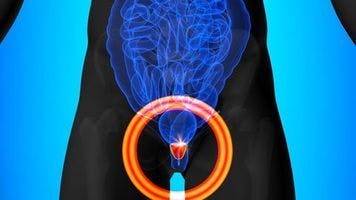Publication
Article
Urology Times Journal
Urinary incontinence prevalence is higher in women with diabetes
Author(s):
Odds of having UI were 56% higher in women with vs women without diabetes.
Analyses of cross-sectional data from women participating in a Danish population-based study provide a reference for the prevalence of urinary incontinence (UI) among Western European women and support the hypothesis that because of disease-related complications, UI is more prevalent in women with diabetes than in women without diabetes, according to the investigators who published their results in a recent article.1
The research included data collected through questionnaires and blood tests for 7906 adult women (aged ≥18 years) who were participants in the Lolland-Falster Health Study. The study population included 374 women with diabetes (4.7%) and 7532 women without diabetes (95.3%). UI, defined as any involuntary leakage of urine during the previous 4 weeks, was present in 188 (50.3%) of the women with diabetes and in 2958 (39.3%) of the women without diabetes.
An association between diabetes and UI was found in an unadjusted logistic regression analysis, with the odds of having UI being 56% higher among women with diabetes than in women without diabetes. Although no association was found between diabetes and UI in a multiple logistic regression analysis adjusting for confounders, there was an association between diabetes and more frequent UI in a subgroup multivariable logistic regression analysis. In addition, the results of another subgroup analysis with adjustment for confounders showed an association between having severe diabetes, identified based on use of multiple antidiabetic medications, and UI. The latter finding led investigators to comment that attention be given to UI when counseling women with severe diabetes.
Additional analyses evaluated associations between diabetes and UI subtypes: stress urinary incontinence, urgency urinary incontinence, and mixed urinary incontinence (MUI). When adjusting for confounders, diabetes was found to be significantly associated only with MUI. The investigators postulated this may be because diabetic women have more severe UI than women without diabetes.
No clear patterns for risk are seen
Subgroup analyses stratifying women by hemoglobin A1c (HbA1c) level and duration of diabetes showed no clear patterns for risk. Age and body mass index were identified as the most important UI risk factors. Associations were also found between UI and parity, current smoking, and sedentary level of physical activity.
The investigators noted that previous studies have shown a link between diabetes and UI, and they hypothesized that such an association exists because diabetes-related microvascular complications and neuropathy would lead to bladder damage and/or affect detrusor muscle function. Nevertheless, previous studies investigating diabetes as a risk factor for UI have generated conflicting findings. The investigators noted that the variable results may be explained by differences in study populations, methods, and UI definitions.
In the current study, women were identified as having diabetes if they self-reported the diagnosis or use of insulin or another antidiabetic medication, had an HbA1c level of 6.5% or higher, or met criteria for history of filling prescriptions for an antidiabetic medication prior to study enrollment. The presence of UI and its subtypes was identified based on information from the International Consultation on Incontinence Questionnaire-Urinary Incontinence Short Form.
According to the investigators, study strengths included a more than 90% questionnaire response rate and the ability to adjust for important confounders. They observed, however, that there was a risk of selection bias, as participation rates were lower for younger and older women. As another limitation, the investigators mentioned that the low number of women with diabetes and UI could have resulted in a type 2 error, and they reported that a post hoc sample size calculation revealed that the study had low power to detect an association.
Reference
1. Løwenstein E, Jepsen R, Andersen LL, et al. Prevalence of urinary incontinence among women with diabetes in the Lolland-Falster Health Study, Denmark. Neurourol Urodyn. 2021;40(3):855-867. doi:10.1002/nau.24636.

Newsletter
Stay current with the latest urology news and practice-changing insights — sign up now for the essential updates every urologist needs.






























